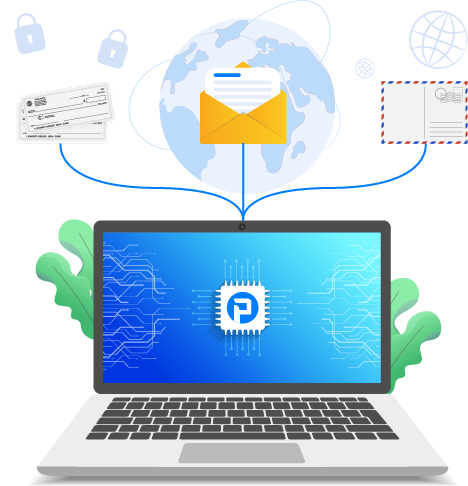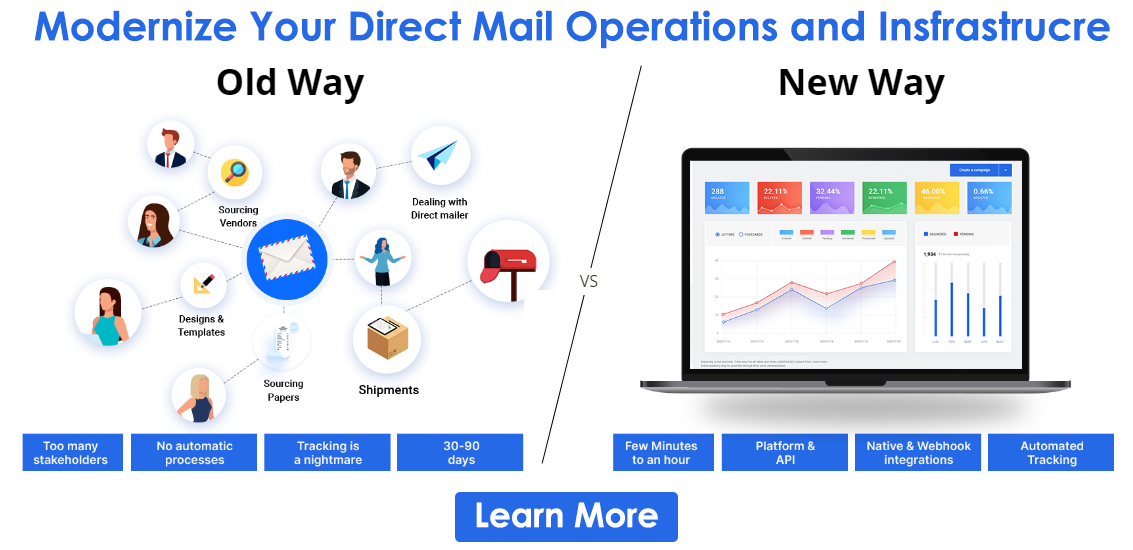
How to Track Direct Mail Campaign: Tracking & Analytics
Despite our preference for digital means of communication, direct mail still remains one of the favourite marketing approaches for marketers in numerous industries. When it is implemented correctly, direct mail has the potential to enhance the reach of your campaign, communicate with your target audience, and effectively drive sales.

Direct mail marketing has evolved over the years and can now be fully automated using an advanced direct mail automation tool equipped with superior tracking and analytics capabilities. Canada Post even has a certification called Software Evaluation and Recognition Program or SERP that lets you know whether a direct mail service provider is reliable.
The SERP certification means that the service provider can access and verify whether a postal address is real and deliverable. A SERP-certified direct mail service provider is more than likely to have advanced direct mail tracking and analytic capabilities. Therefore, it should come as no surprise that the best and most convenient way to optimize, track, and analyze direct mail is through an advanced tool.
This article discusses how you can track your direct mail, and we also discuss the significance of direct mail tracking and analytics. We further take a look at some of the major direct mail tracking methods and explain how you can effectively track direct mail using KPIs or Key Performance Indicators. Additionally, we also list some of the major KPIs you can consider for effective direct mail tracking and analytics.
 Also Read: Real Estate Direct Mail Marketing
Also Read: Real Estate Direct Mail MarketingThe Significance of Direct Mail Tracking And Analytics
Understanding the finer details of your direct mail campaign is necessary for its effective implementation. Thanks to today’s advanced solutions, you can get valuable insights into your direct mail campaigns. Earlier the only measurable data on direct mail effectiveness was the count of sales or the leads generated.
With advanced direct mail tracking, you get access to valuable insights, when coupled with a systematic approach such insights enable them to measure the performance of their direct mail campaigns efficiently. With such vital data, you also have the ability to calculate an accurate ROI, determine success metrics, and keep records of your campaign and its results.

Direct Mail Tracking Methods
When it comes to direct mail tracking, it is quintessential that you ensure any point of contact listed on your direct mail is both trackable and unique. The point of contact could be anything, including phone number, website URL, coupon code, or something else altogether. Below we discuss some of the most popular direct mail tracking methods used by marketers today.
Trackable Phone Number
Call tracking is one of the easy and time-tested methods for direct mail tracking. You can even set up a dedicated toll-free number and have the calls to that number automatically forwarded to your business line. You can also employ a reliable call tracking software company for this. However, this method can give you the response rate and many finer details are not accounted for.
Trackable URLs
Including a URL in your direct mail that is specifically created for the campaign in each of your direct mail pieces is an effective tracking method. The campaign-specific URL takes the user/recipient to a custom landing page or your website. From here, you can use your website’s analytic tools and get advanced insights that significantly enhance your direct mail tracking capabilities.
Coupon Codes
Coupon codes are yet another effective tool in marketing campaigns. Coupons in the old days were redeemed at the store, but now you enable the customer to redeem them either at your store or your online website or mobile app. One notable advantage of coupon codes is that it lets you track the sage individually or measure the effectiveness of direct mail campaigns between interest groups.
QR Codes
QR codes are the most popular choice for direct mail campaign tracking. They are easy and convenient for the user to access your business directly from the mailpiece. The QR code can lead the users to a unique landing page or URL. Similar to what we saw in the trackable URLs, this method can also be used with your website’s analytic tools for getting in-depth insights into your campaign.

Track Your Direct Mail With The Help of KPIs
Key Performance Indicators or KPIs can be used to effectively track your direct mails. Using KPIs for tracking direct mail gives you a comprehensive idea about the effectiveness of the campaign as they provide you with real-time, actionable insights. However, you must ensure that you pick the right KPI for your unique goals. Below, we discuss some of the major KPIs you use to track your direct mail.
1. Response Rate
Response rate is the most commonly used KPI for direct mail tracking as it shows you what percentage of your direct mail targets have responded to your mailer. We have already discussed the tracking methods through which the recipient can respond to your mailer above.
Keep in mind that if you do not track every method of contact with your target audience, you will never have an accurate response rate.
2. Conversion Rate
Conversion rate or order rate is perhaps the simplest KPI you can use, to find out just how effective your direct mail was in terms of conversion. It gives you the percentage of the target audience of the direct mail campaign, which made the desired action upon receiving the mailer.
A conversion rate is especially ideal for businesses with a longer sales cycle, such as law offices.
3. Cost Per Acquisition (CPA)
Cost Per Acquisition or CPA is a KPI that tells you how much it cost you to obtain a new customer. It is also known as cost per lead/order.
Often marketers compare the CPA of direct mail with the CPA of their other marketing campaigns so that they can figure out which of the two marketing efforts is more efficient for their business.
4. Average Order Size
As the name suggests, Average Order Size is a KPI that gives you the average amount of revenue you earn for each sale you make through the direct mail campaign.
You can either calculate this beforehand by examining the data available from their previous order or calculate it using the relevant data from your direct mail campaign.
5. Revenue per Order
The KPI Revenue per order can be calculated by simply subtracting the CPA from the average order size of your business. This KPI can be extremely useful for determining the profitability of your product or service.
To be more precise, it gives you a clear idea about the profit you can make from every order on average.
6. Return on Investment (ROI)
Return on Investment or ROI is a term well familiar for all businesses and a KPI that direct mail campaigns shine at. The ROI conveys the overall effectiveness or success rate of your direct mail campaign.
The higher the ROI of your direct mail campaign, the more successful it is for your business. Direct mails generally have a higher ROI than most other marketing campaigns.
7. Customer Lifetime Value (CLV)
Customer Lifetime Value is an essential KPI for every business if they have long-term goals. What makes CLV unique from the other KPIs is that it is not instant feedback. Customer Lifetime Value signifies your business’s relationship with its customers. You can positively influence the CLV through superior customer service, attractive loyalty programs, and other reward programs.

Conclusion
Direct mail APIs is used by businesses belonging to numerous industry verticals, and more businesses keep on joining the club. Businesses that employ direct mail as part of their marketing efforts must track them and access analytics data to optimize their efforts. There are several KPIs and tracking methods you can use for this.
Furthermore, to ensure the best result for your direct mail campaigns, you need to employ an advanced direct mail solution like PostGrid. Advanced solutions, like PostGrid, enable you to track your direct mail easily and also access valuable analytics that lets you optimize your direct mail process.










